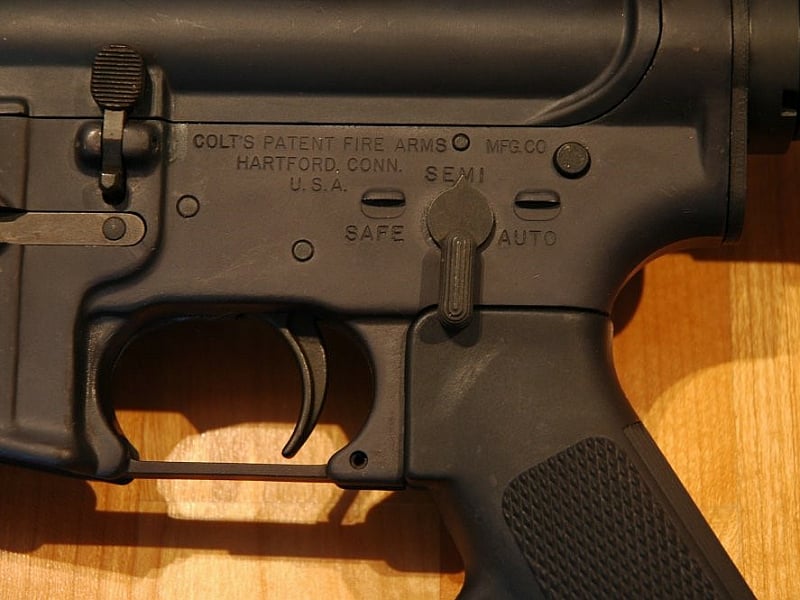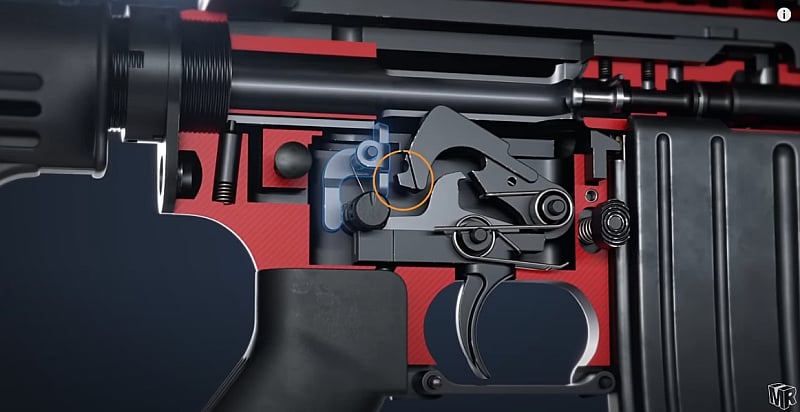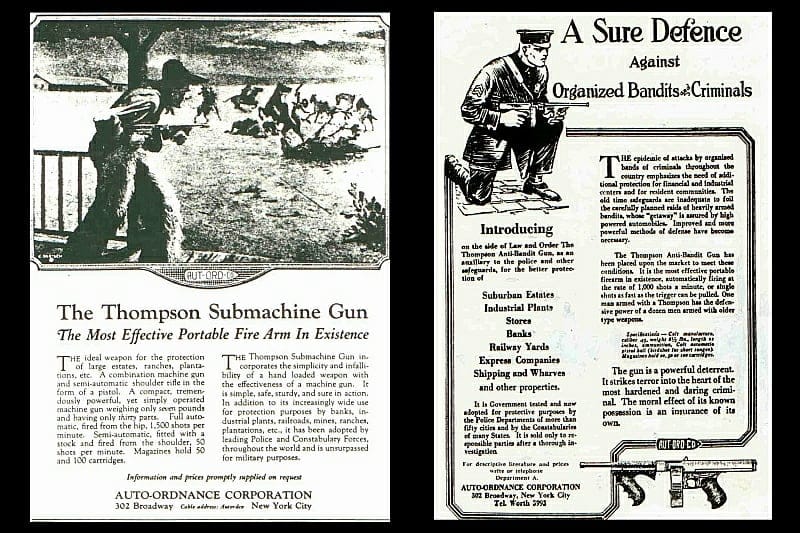Most Mag Life readers know the difference between automatic firearms and semi-automatic firearms. But the last several years have introduced millions of folks to firearms and firearm ownership for the first time. On top of that, the ongoing gun control debate muddles the definitions, sometimes through ignorance and sometimes through deliberate obfuscation. So, with that in mind, let’s briefly look at what differentiates automatic firearms from those that are merely semi-automatic.

Basic Definitions
An automatic, or fully automatic, firearm is a machine gun or other gun that operates like a machine gun. That means the shooter depresses the trigger once and the gun will fire until it is empty, or the trigger is released.
A semi-automatic firearm requires the trigger to be depressed one time for each shot fired. Holding the trigger down, as on an automatic firearm, does nothing. The trigger must be released and depressed again to fire another round. One trigger pull equals one round fired.
The semi-automatic classification does not include revolvers, which require a trigger pull to rotate the cylinder. Nor does it include rifles or shotguns which require the shooter to manually operate the action, as with a bolt action or lever action rifle or a pump shotgun. All those guns are “repeaters,” but they are not semi-automatic.
From the shooter’s standpoint, that’s the difference between the two. Functionally, there’s obviously more to it. I’m no firearms engineer, nor even a gunsmith, but a very basic explanation is in order.

Mechanical Differences
The main mechanical difference between automatic and semi-automatic firearms is that fully automatic guns have an auto sear, while semi-auto guns do not. The auto sear allows the trigger to disengage from the gun’s action, meaning the action is allowed to cycle freely until releasing the trigger stops it. A modified version of a fully automatic firearm is one with “burst” capability, like the US military’s M-4 carbine. The M-4 includes a cam clutch spring that stops the action after a three-round burst. I can’t explain it further than that because I have little to no mechanical ability. But I’ve included a photo if that helps.
Semi-auto firearms do not have the auto sear. In fact, auto sears are tightly regulated under the National Firearms Act of 1934 and are treated as actual machine guns under that law. More on that coming up.
A fully automatic M-16 also has an additional lug on the bolt carrier group, which engages the auto sear. The semi-auto AR-15 bolt carrier does not have that lug, though both bolt carriers are compatible with the semi-auto rifle, but not the fully automatic version. The extra lug does not, however, make the semi-auto AR-15 fully automatic. Only the auto sear can do that. The hammers are also shaped differently, and the full-auto M-16 has an additional selector position for fully automatic fire. Guns with burst capability have a burst setting.
Again, that is a very simplistic explanation, but it describes the fundamental differences. Other weapon systems will have additional nuances to how they work.

Machine Guns are Heavily Regulated
American-born inventor Hiram Maxim invented the first machine gun in 1884. The new weapon saw its first sustained combat use in the 1904-1905 Russo-Japanese War. By the time the First World War broke out in 1914, machine guns were standard equipment for modern armies. The sheer scale of World War I saw a massive proliferation of machine guns, many of which became publicly available as war surplus.
The invention of submachine guns like the MP-18 and Thompson introduced lightweight automatic firepower to the military, police, and civilians. Americans could buy fully automatic “Tommy Guns” through mail-order catalogs. Ah, the good ol’ days.
But American Prohibition saw organized crime explode as criminal gangs imported and sold illicit alcohol to a thirsty public. The well-meaning folks who outlawed alcohol unleashed a wave of criminal violence that made guys like Al Capone household names. Capone was behind one of the most shocking incidents when his men gunned down seven members of a rival Chicago gang in 1929’s St. Valentine’s Day Massacre.

The onset of the Great Depression later that year made matters worse. Armed robbery became widespread as desperate people felt they had nothing to lose. Criminals like Clyde Barrow, Baby Face Nelson, and John Dillinger often used automatic weapons to do the job. These “folk-hero” criminals, added to the gang violence brought on by Prohibition, forced Congress and President Franklin D. Roosevelt to act.
The resulting National Firearms Act of 1934 was, and is, constitutionally dubious. It does, however, regulate automatic weapons, along with suppressors, destructive devices like explosives, and short-barreled rifles and shotguns. In 1986, the so-called National Firearms Owners Protection Act prohibited the transfer or possession of machine guns—automatic weapons—except those lawfully possessed before the act took effect. The military and police are, of course, exempt from those prohibitions.
As a result, the limited number of publicly transferable automatic weapons is finite. That means they are astronomically expensive. For example, you can expect to pay well over 20 thousand dollars for a fully automatic M-16. And that doesn’t include the numerous government hoops you’ll jump through and the $200 tax you’ll pay for the privilege. The aforementioned auto sears are also illegal to manufacture or transfer. They are counted as machine guns under the NFA.
Honestly, even if I could afford a full-auto weapon, I probably wouldn’t fool with it. But that’s me. Some ranges have full-auto firearms you can rent under strict supervision. But be prepared to pay for all the ammo you’ll blow through in a very short period.

Confusing Terms
Many people rely on the media for gun terms like “semi-automatic” and “fully automatic.” If you’re into firearms at all, you likely know that the media often has no clue about guns, which confuses the people who read or watch their reporting.
Even worse, many media members take their cues from arch gun controller Michael Bloomberg and his disarmament-minded organizations like Everytown for Gun Safety. Reporters also get tips from the Johns Hopkins Center for Gun Violence Solutions, which is part of the Bloomberg School of Public Health. This organization offers courses for “journalists” that teach them how to report on “gun violence.” Do you think that might be a little biased, considering who funds it? The correct answer to that question is “yes,” and it’s more than a little.
Such journalists are responsible for referring to semi-automatic firearms as “automatic weapons.” When called out on that, they coined the term “fully semi-automatic” to continue the scary narrative. In other words, most of the media serves as a giant anti-gun propaganda machine. They initially just didn’t know what they were talking about. There’s still plenty of that, but many deliberately misinform the public about firearms and how they operate.

But It’s Not Difficult
Despite the breathless claims of activists, politicians, and the media, machine guns are incredibly difficult to obtain in the United States. They are also prohibitively expensive. And since the last of those fabled criminals of the 1920s and 1930s were captured or killed, machine guns have almost never been used in criminal acts, despite the many Hollywood portrayals.
Again, fully automatic firearms fire continuously when the trigger is depressed and stays depressed. Semi-automatic firearms require a separate trigger operation for each round fired. That’s it. Nothing mysterious or scary. And no matter what agenda-driven activists tell you, including prominent politicians, “weapons of war,” i.e., machine guns, are not inundating American streets. But there sure is a flood of propaganda.


